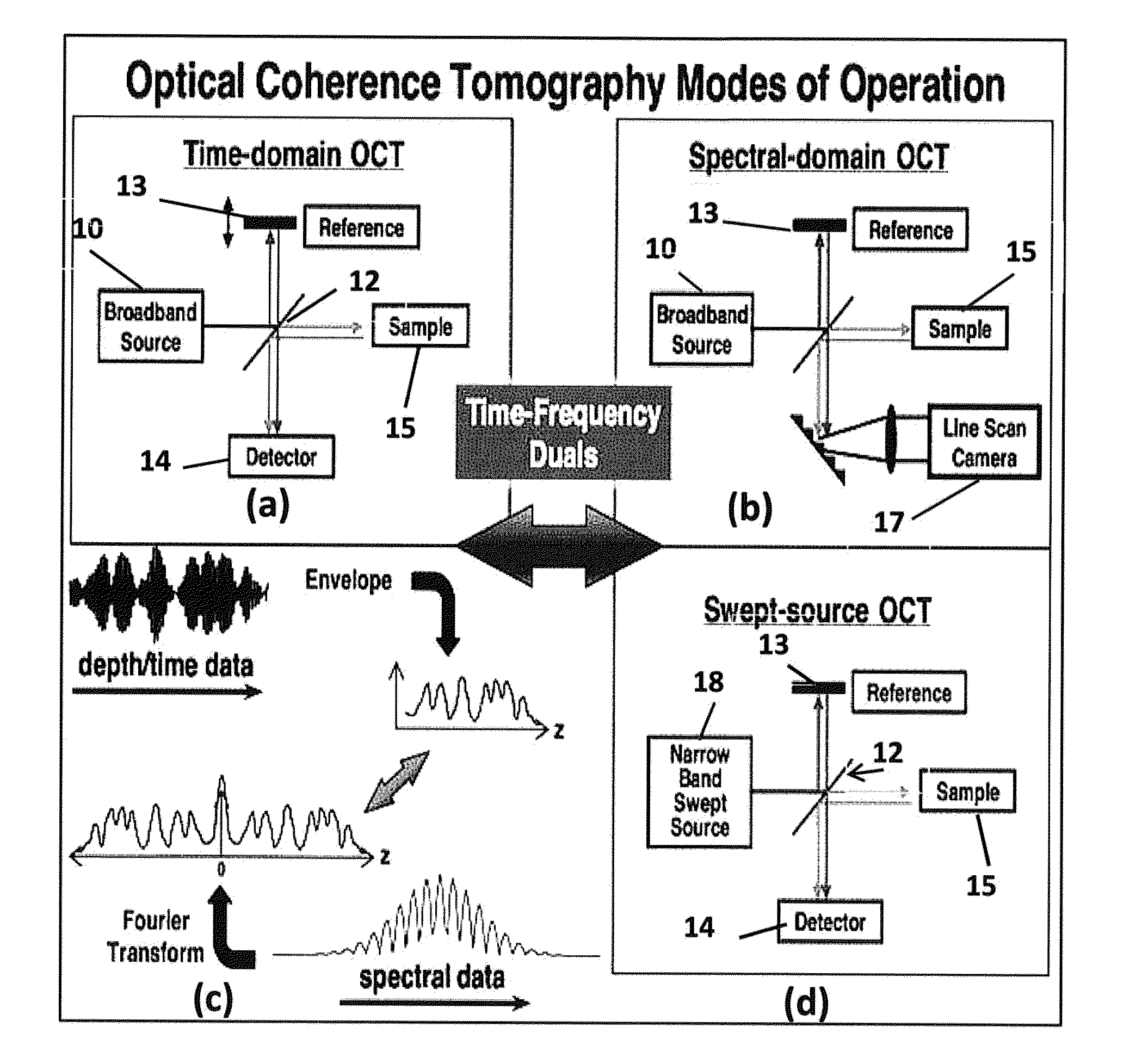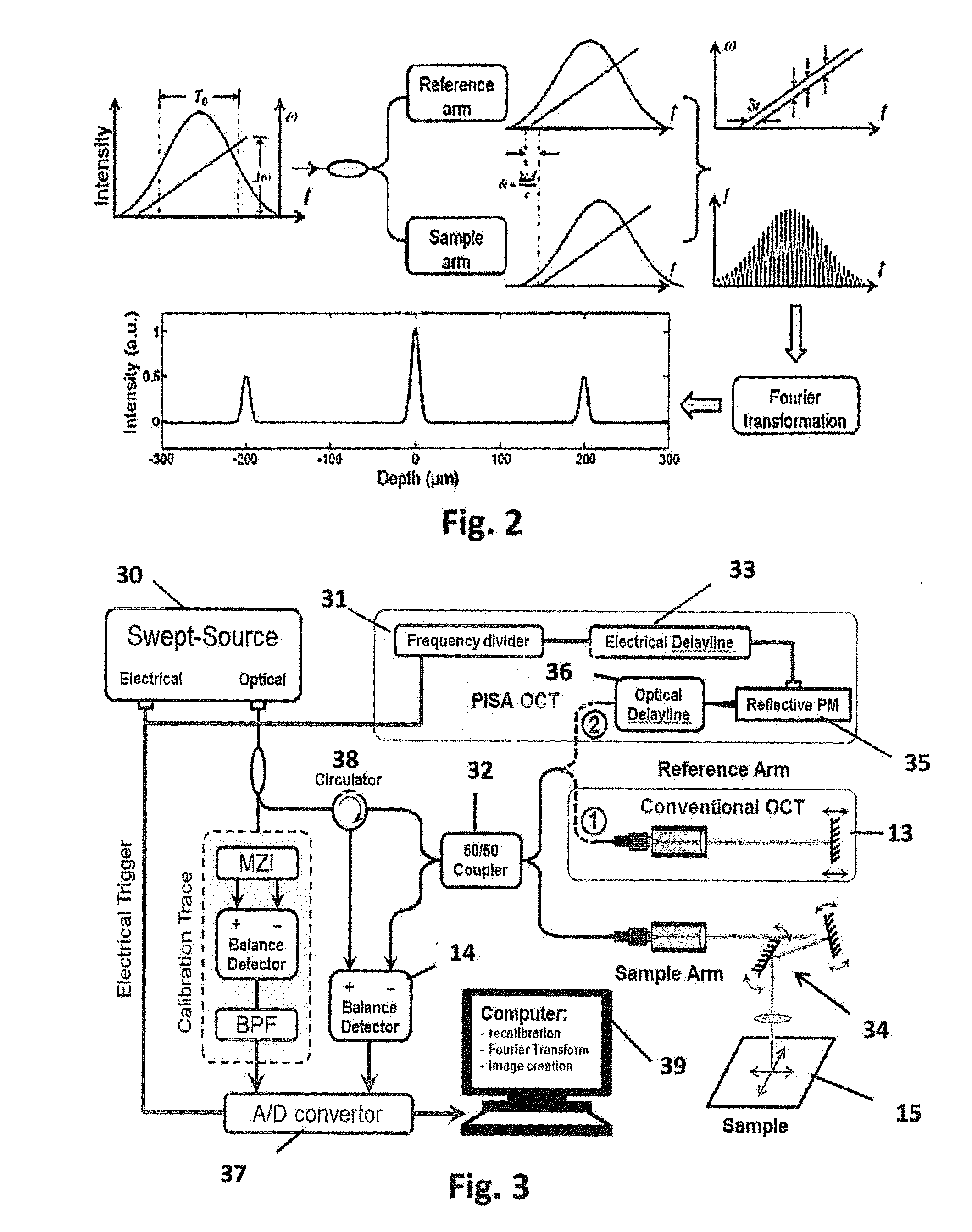Phase-inverted sidelobe-annihilated optical coherence tomography
a tomography and phase inversion technology, applied in the field of tomographic image capture, can solve problems such as different interference frequencies, and achieve the effects of enhancing sensitivity, reducing interference frequency, and reducing interference frequency
- Summary
- Abstract
- Description
- Claims
- Application Information
AI Technical Summary
Benefits of technology
Problems solved by technology
Method used
Image
Examples
Embodiment Construction
[0026]Phase-inverted sidelobe-annihilated optical coherence tomography (PISA-OCT) leverages a π-step phase modulation to introduce a two-peak shape in the frequency domain. This two-peak shape causes the system to achieve a sharper resolution than the resolution that is diffraction-limited by the spectral bandwidth. The essential part of PISA-OCT is introducing a phase modulator in the reference arm of a conventional swept-source OCT.
[0027]A conventional swept-source OCT, and its working principle is shown in FIG. 2. In this arrangement because of the different depths of the sample, the interference signal from the swept-source in the reference and sample arms introduces a temporal delay that is expressed as different frequencies. By only considering a single surface of the sample in the sample arm, this swept-source is delayed by δt=2Δd / c. Therefore, we can derive the description of the depth information in the frequency domain:
D(d)=πln2T0{12exp[-Δω2c24ln2(d-Δd)2]+12exp[-Δω2c24ln2(...
PUM
 Login to View More
Login to View More Abstract
Description
Claims
Application Information
 Login to View More
Login to View More - R&D
- Intellectual Property
- Life Sciences
- Materials
- Tech Scout
- Unparalleled Data Quality
- Higher Quality Content
- 60% Fewer Hallucinations
Browse by: Latest US Patents, China's latest patents, Technical Efficacy Thesaurus, Application Domain, Technology Topic, Popular Technical Reports.
© 2025 PatSnap. All rights reserved.Legal|Privacy policy|Modern Slavery Act Transparency Statement|Sitemap|About US| Contact US: help@patsnap.com



